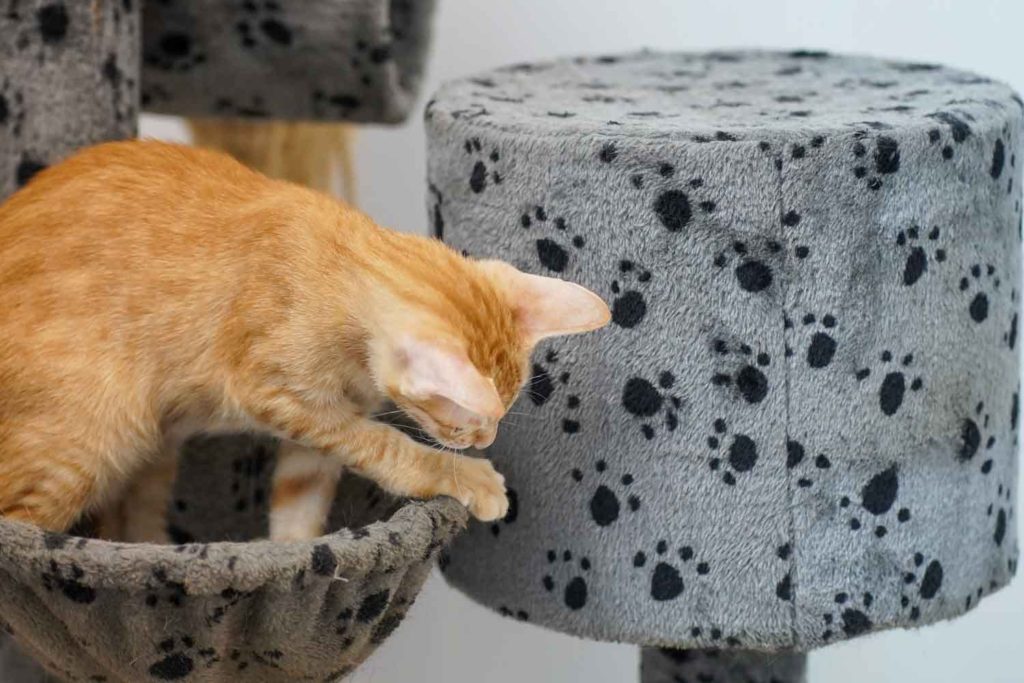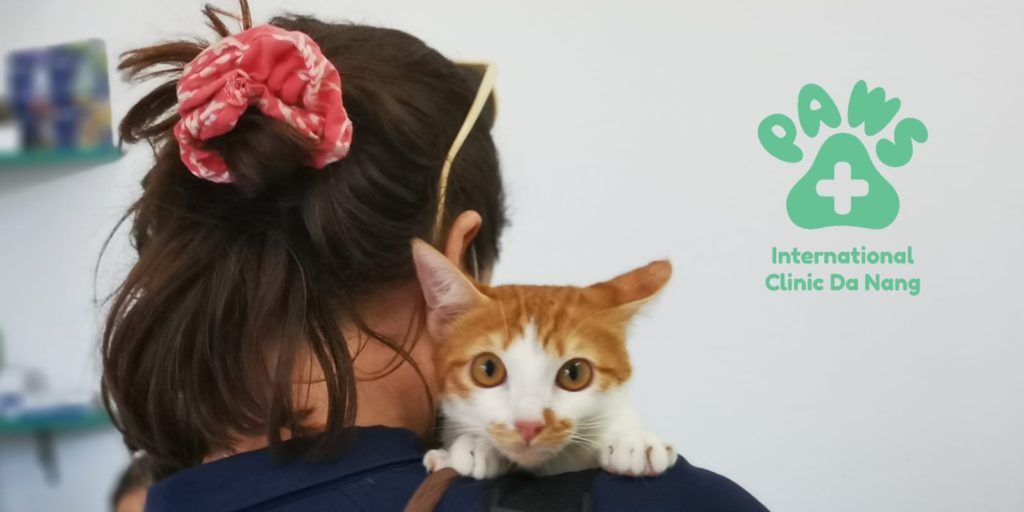
Before the arrival of your new fur-baby, you should prepare a few things. This includes:
When your cat first arrives in their new home it is normal for them to find a place to hide. They might stay here all day, and it may take them a few days to feel comfortable exploring their new surroundings. It’s a good idea to give them their own quiet space, like a spare bedroom or a bathroom, with a box to hide in. Make sure their litter box, food and water are nearby, and allow them to stay here for as long as they need to. Avoid loud noises and lots of strange people whilst the cat is getting used to their new home.
Direct eye contact is seen as threatening to cats. Whilst your cat is getting to know you, it’s a good idea to sit next to them or with your back to them, speak to them gently and allow them to come to you. Don’t stare at your cat or corner him. Slowly blink your eyes and hold them closed – this is like a smile for a cat 🙂
If you are introducing them to an existing pet, you should do so gradually. Keep them separate at first, introducing smells only (for example, letting them sniff some bedding). Eventually you can let them smell each other through a crack in the door – small enough so paws can’t get through! Feed them on separate sides of the door. Read their body language and watch for aggressive behaviour. If everything is going ok, you can begin short face to face meetings, slowly lengthening the time. This may take anywhere from a few days to a few weeks depending on the cat.
Bad relationships are very hard to fix, so gradual introductions are essential!
The cat is an obligate carnivore – to remain healthy, domestic cats require a diet of animal protein. One reason for the requirement for animal protein is that cats need taurine – this is an Essential Amino Acid for the cat.
Another reason for needing protein is that the cat, unlike most other animals, uses protein as their primary energy source. Non-obligate carnivores, such as dogs, use carbohydrates as their primary energy source.
It is very difficult to provide all a cat’s nutritional requirements with homemade food. It is therefore recommended that you feed commercial cat foods from the pet shop.
Pet foods should be chosen according to the life stage of the cat – each stage requires differing nutrients, and this will help your cat live a long and healthy life.
If you decide to change the cat’s diet, it should be done so gradually. Sudden changes to diet can cause an upset tummy. Small amounts of the new food should be mixed into the old food, and this should slowly increase.
Do not feed chicken, fish, or pork bones to your cat – the bones can splinter and become stuck in the throat, and even cause death. Never give your cat milk – cats are lactose intolerant. Some foods like chocolate and onions can also be toxic for cats.
Food and water bowls should be placed away from the litter tray area.
Cats thrive off routine, so it is good to feed your cat at the same times each day!
Cats are very good at disguising health problems, and therefore you may only notice subtle differences in behaviour when something is wrong. Some things to check include:
If you notice any unusual signs or changes to your cat’s behaviour, contact the Paws International Clinic.
A lot of health problems can be prevented. It is important to keep up with annual booster shots – these vaccinations help to prevent many nasty and even fatal illnesses. Commonly cats are vaccinated against:
You should also de-worm and de-flea your cat every 3 months.
Cats are clean animals, and they do a good job of keeping themselves clean. You do not need to bathe your cat at all (unless they have something harmful on their fur, or you have been instructed to do so by your vet). Bathing is very stressful for cats, and it also strips the natural oils from their skin and fur, which can cause future skin problems.
You can groom your cat by gently brushing their fur once a week for short haired cats, or a little more frequently for long haired cats. This is a great time to bond, and you may also check their skin/fur for any abrasions or fleas at the same time.
If you need to trim your cat’s claws, this should be done very carefully. You should take great care to avoid the “quick” (the pink triangle visible on the cat’s claw). Cutting the quick is very painful and will cause bleeding.
If you would like to put a collar on your cat, you’ll need to ensure it fits correctly. If the collar is too loose, it can become caught on objects in your home – this is extremely dangerous and can result in serious injury or death. If it is too tight, it can affect your cat’s ability to breathe/eat and may cause abrasions on the skin.
You should be able to fit 1-2 fingers comfortably under the collar: purrrfect fit!
As indoor cats, it is important to provide plenty of enrichment for your new baby. Cat’s like to climb and view the world from up high – you could strategically place a cat tree next to a wardrobe, for example, to give them an opportunity to climb to the highest heights! Window beds are also a great idea! Providing boxes or enclosed beds for your cat will help them to feel safe and secure.
Play time is very important – rotate a variety of toys to keep your kitty excited! Things like food puzzles, wand toys, even scrunched up pieces of paper and string, are all great cat entertainment! Scheduling daily play time with your cat will help you to bond and prevent boredom and potential behavioural issues.
Scratch posts are very important – scratching is a natural behaviour and is highly beneficial to cats. Not only does it help them to mark their territory, keep their claws healthy, and stretch their muscles, but it also releases happy hormones and helps your kitty feel content. Never punish your cat for scratching! Provide long scratch posts and encourage your cat to scratch in the right place using toys and treats 🙂
Cats have an excellent memory and learn through experiences. If you negatively punish your cat, for example, by hitting them, they will associate you with this negative event and will lose trust in you. This will in turn make any behavioural issues much worse.
You should instead reward good behaviour with treats and ignore bad behaviour completely. As an example, if a cat scratches your sofa you should ignore him (and perhaps cover the sofa with a throw or blanket), but if he scratches in the right place (the scratch post) you should highly praise him. He will quickly learn where to scratch!
Please contact your vet if you notice any specific behavioural issues so that they may rule out medical causes and advise you.
Cats find travel very stressful. It is a good idea to carrier train your cat so that any trips you take are not too overwhelming. To train your cat, you should keep the carrier in full sight in your home, so that the cat is not afraid when they see it.
Next, you should reward the cat with treats in and around the carrier, allowing them to freely go in and out of it. Soon, you’ll be able to shut them in the carrier for short amounts of time in the home, and gradually increase the time, for example, 5 minutes, 10 minutes, 15 minutes. Give treats and praise the cat when they are in the carrier. When they remain calm and always relaxed in the carrier, you can then take them out for short walks up and down the street, again increasing the time and distance very gradually. Then you may introduce short car rides.
The aim is for the cat to always stay calm. If they begin to show signs of stress, the process should be stopped. Try lining the carrier with a towel to make your cat comfortable, and so they have a familiar scent of home whilst travelling. You should ask your vet about the best calming supplements to use.


©2022 Paws For Compassion · Website by C: Digital Solutions